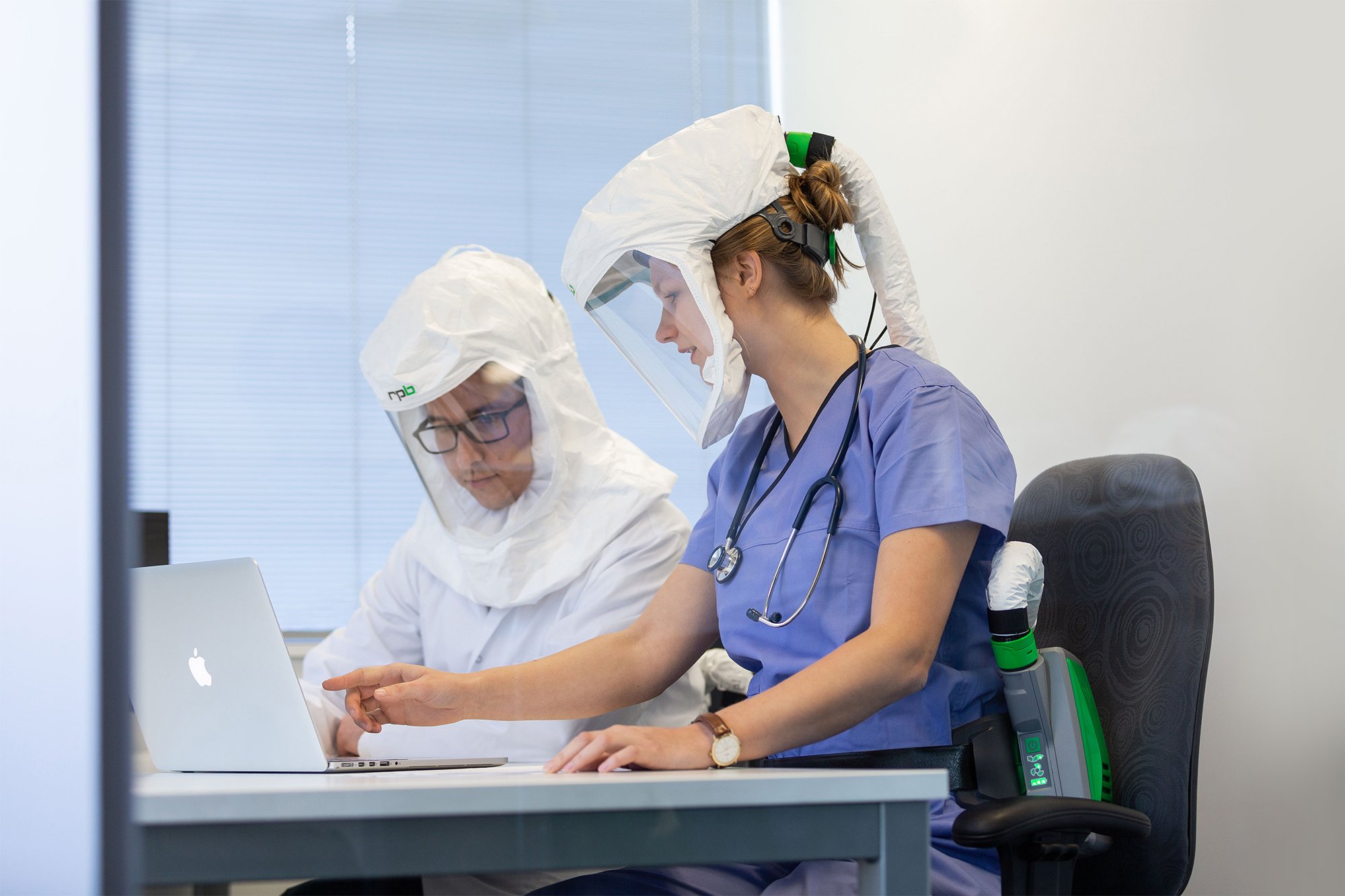Ensuring the safety and protection of their frontline healthcare workers has been a real fear as lack of PPE resources, in particular the N95, meant they have been unable to adequately protect their staff and patients. Like so many other healthcare providers throughout the United States, ProHealth Care based in Waukesha County, WI, has felt the pain of PPE supply shortages that has been caused by the COVID-19 outbreak.
To resolve this serious health threat, ProHealth searched for alternative forms of PPE that had reliable supply sources and would provide a greater level of protection for their staff. During this search, CME Corp reached out with an email introducing RPB Safety, a respiratory protection manufacture based in the US. Soon after, both CME and RPB Safety met with procurement members of ProHealth Care and within a month, they received their first shipment of Powered Air-Purifying Respirator (PAPR) solutions.
Challenges with N95 use
N95 respirators are designed to be single-use and disposable. In normal circumstances, a nurse or doctor would use between six to eight N95s in a single day. However, throughout the coronavirus pandemic, these best practices have changed due to supply shortages and healthcare workers have been forced to use these for extended periods and attempt cleaning and disinfecting the material, something these products were never designed for. Even though we’ve been going through the pandemic for over a year now, these supply issues still persist today.
One of the most heavily reported issues with N95 use has been around discomfort. Assessments have found that there is significant reduction of air exchange volume which makes breathing feel restricted for the wearer. This has led to an abundance of reports of user fatigue, which can negatively impact the service that healthcare workers are able to provide, as well as their psychological wellbeing. Wearers have also experienced cuts, bruising, and acne from the tight seal on to the face which has been a significant source of pain.
The N95s also get in the way of verbal and non-verbal communication as the mouth is covered. This not only makes tasks more difficult for the healthcare worker but can also be distressing for the patients that are receiving treatment.
With N95 use, employers are legally required by the Occupational Safety and Health Administration (OSHA) to carry out annual face fit testing for every worker. Whenever a new brand of mask is introduced, which has occurred frequently throughout the pandemic, a further face fit test is required which is a costly exercise to that organization.
CME and RPB Safety PAPR Solutions
PAPRs have been in use for many years now, most notably throughout industrial settings because of their high filtration efficiency. In November of last year, the CDC recognized their value in healthcare settings and introduced them as a viable alternative to N95 respirators. Healthcare workers all around the world have benefited from their greater level of respiratory protection and the incorporation of multiple PPE systems in one.
Facilities have found that through the use of PAPRs and loose-fitting headtops, patient recovery has been positively affected. This is due to the face being free of obstructions which has helped healthcare workers to communicate effectively with their patients. Most importantly, the implementation of these systems have reduced staff contraction of COVID-19 in healthcare facilities compared to when using N95s.
PAPRs also do not require face fit testing due to the loose-fitting design, reducing operating costs to the business.
The Outcome
Once ProHealth could see the benefits of switching their respiratory protection from N95s to PAPRs, a detailed quote was sent out by CME. As each PO was received, both CME and RPB Safety expedited the process. From PO receipt to shipment arrival, this averaged at just four days. Because RPB’s products are manufactured in the US, there were no issues with backorders or delays.
ProHealth ordered 325 complete kits with 1,500 extra hoods so that units could be used by multiple caregivers.
“When the PAPRs were introduced, it was a sense of relief for everyone. Before that, we’d go home each day worried that the masks we were wearing wasn’t doing enough... that the virus would come home with us and to top it all off, we were exhausted. But when the PAPRs from RPB were rolled out, that changed everything. We felt safer, less tired, and most importantly the patients felt more comfortable. These systems couldn’t have come at a better time and we’re very thankful to both CME and RPB for making a real difference here.”
About CME: CME Corp is the nation’s premier source for healthcare equipment, turnkey logistics, and biomedical services, representing 2 million+ products from more than 2,000 manufacturers. With two corporate offices and 35+ service centers, our mission is to help healthcare facilities nationwide reduce the cost of the equipment they purchase, make their equipment specification, delivery, installation, and maintenance processes more efficient, and help them seamlessly launch, renovate and expand on schedule.
We are proud to work with RPB Safety, one of our strategic vendors, to help our end-user customers with this very important issue. For more information, go to our website or call 800-338-2372.



